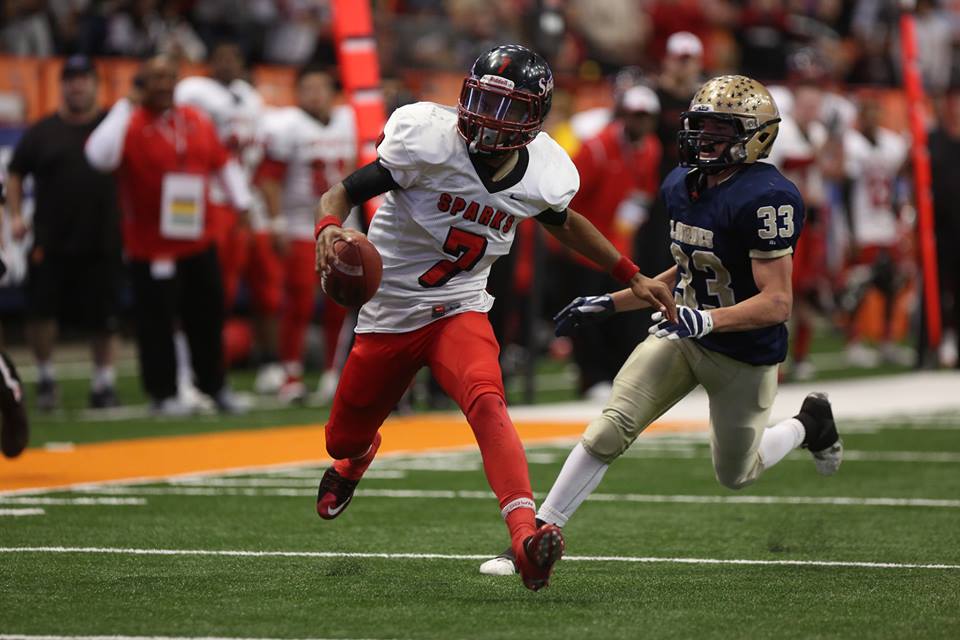May 17, 2017The Right Reaction
During most team practices, athletes will engage in agility drills, whether it’s running through ladders or a course set out with cones. But one major element of agility training is often overlooked — the ability to swiftly react to different situations.
While tools such as ladders and cones are great for conditioning and speed work, the exercises that are used with them might not be giving athletes all of the expected benefits of agility training. In a blog for Train Heroic, Danny Takacs, CSCS, explains that because athletes can already see the path that they are going to take, they might not be working to the fullest extent on their physical and mental agility.
“During competition, athletes have to react to a live stimulus,” writes Takacs. “They must change their body’s position efficiently based on what is happening around them, in real-time. At no point during an athletic competition does your opponent tell you what they are going to do next and give you time to prepare for it.”

Instead of having athletes constantly run the same patterns time and time again, Takacs suggests adding a level of unpredictability through using drills that involve athletes changing direction or speed in reaction to some kind of cue. This could be anything from pointing a hand to blowing a whistle. Doing this allows you to change up the athletes’ workout at any time, causing them to make split-second decisions and move quickly in multiple directions.
“Reactive agility drills are an effective way of improving an athlete’s ability to efficiently change his or her body’s position in reaction to a live stimulus,” writes Takacs. “Unlike planned agility drills, reactive exercises force athletes to respond to real-time cues just like they do during competition.”
A major positive of utilizing reactive agility drills is that there is often no need for any equipment. However, you can utilize your cones and ladders, and even have your athletes engage in motions similar to previous drills. Just make sure to add a component where athletes have to respond to either you or another type of external stimuli at seemingly random intervals. For example, during a routine ladder drill, a coach could instruct the player to change direction at the sound of a clap.
By implementing the reactive component, coaches can also create drills that are more individualized to the athlete and the sport. For example, a volleyball coach might incorporate a drill where players must sprint to any spot that is pointed to, and immediately return to their original position.
To further the understanding of reaction agility training, multiple researchers have done studies into the percieved benefits. Their results show that reactionary measures are an effective method for increasing your athletes’ chances of beating their opponent on the playing field.
“For example, a recent study in The Journal of Australian Strength and Conditioning found that reactive agility tests can improve an athlete’s perception and response times (Inglis & Bird, 2016),” writes Takacs. “Another study concluded that reactive and planned agility are two separate physical qualities, meaning that performing planned agility exercises may not improve reactive ability during competition (Lockie, Jeffriess, McGann, Callaghan, & Schultz, 2014).”
While the number of exercises that can be utilized as reactive agility drills is seemingly endless, Takacs gives four examples to help coaches get started. Here are two of those exercises:
Sport/Position-Specific Drill
This is a football-drill specifically aimed towards running backs. It involves multiple stimuli, at least three athletes, and is best done in small groups.
- Player 1 lines up at a chosen distance facing the end zone.
- Player 1 begins to run towards the end zone.
- Player 2 throws a football to Player 1 (at any time during the drill), which he must catch.
- Player 3 rolls a large ball (at any time during the drill), which Player 1 must avoid.
- Player 3 then runs out to “tackle,” which Player 1 must avoid.
- Vary the timing of each step in each additional repetition.
To see this drill in action, check out this video from personal trainer Joe DeFranco.
Reactive Hip Turn Drill
- Set apart markers, such as cones, at a desired distance.
- The athlete begins at the first marker, facing the opposite direction that he or she will be running.
- At the sound of the chosen cue (e.g. clap, shout), the athlete will turn and sprint to the other marker.
- The athlete decelerates and waits for the next cue, when they will turn around and repeat the procedure back to the first marker.
- Repeat as many times as desired.
Check out this video from Lee Taft Athletic Consulting to see this drill in motion.
Top Ad ZoneID:
48435



